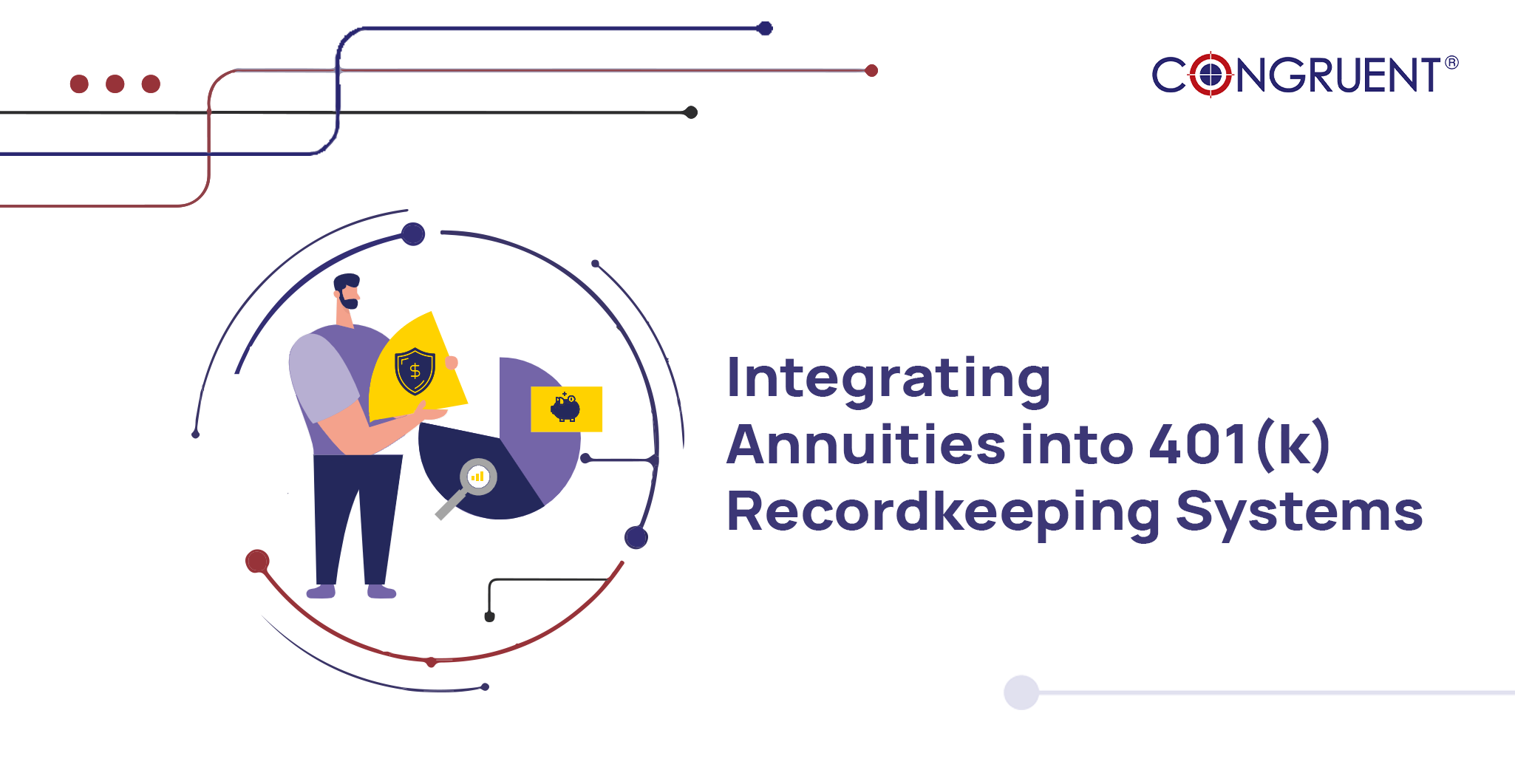
Annuities offer the promise of a pension-like, lifetime income stream, addressing one of the most significant gaps in traditional defined-contribution plans. As annuities gain traction in 401(k) plans, driven by legislative changes such as the SECURE Act 2.0, recordkeepers face technical challenges in integrating these products into their existing systems.
As interest grows among plan sponsors and participants, recordkeepers must adapt their systems to handle the administrative requirements. From managing annuity data alongside traditional assets to ensuring smooth transaction processing and maintaining system compatibility, recordkeepers have a critical role in supporting the adoption of annuities in retirement plans.
Keeping annuities intact and portable when participants change jobs or sponsors switch recordkeepers requires interoperable platforms and robust data standards. Plan disclosures and regulatory filings require recordkeepers to maintain specialized data feeds and new valuation methodologies to generate clear and consistent reports.
This article explores these complexities and offers actionable strategies to help recordkeepers transition to a more annuity-friendly system smoothly.
Key technical considerations for integrating annuities into 401(k) recordkeeping systems
Here are the key considerations when selecting the right 401(k) recordkeeping system:
Data integration and interoperability
Unlike traditional investments, annuities involve frequent, bidirectional data exchanges related to participant eligibility, allocations, annuity purchase details, and payout records. The data must flow seamlessly and securely between insurers and recordkeepers. Efficient use of APIs and standardized data formats is essential for reducing friction and ensuring system compatibility.
Elimination of data silos
Centralizing participant data provides a unified, real-time view for administrators, thereby boosting accuracy and reducing the need for manual reconciliation. Integrated solutions, APIs, and cloud-based platforms support secure and automated data transfers. It minimizes errors and enhances compliance with IRS and DOL regulations.
Compliance and security
The addition of annuity in 401(k) plans introduces new compliance requirements, including those related to participant disclosures, safe harbor selection, and ERISA regulations. Recordkeepers must continuously adapt their platforms to accommodate new testing and reporting obligations that prioritize encryption to safeguard sensitive transactional and participant data.
Portability
Recordkeepers must enable participants to easily transfer annuities when switching jobs or plan sponsors change recordkeepers. They must ensure data transfers are secure, reliable, and compliant across plan sponsors and recordkeeping systems. Solutions are needed to automate and simplify the process, efficiently transferring complex data while reducing operational burdens and maintaining compliance.
How to prepare recordkeeping systems for data management and transaction processing for 401(k) annuities?
Successful annuity integration requires robust software and system capabilities. Recordkeepers must implement standardized data protocols to track annuity contributions and distributions accurately.
Adopting automation tools can help streamline repetitive tasks, such as reconciling annuity payouts with participant accounts. APIs are also important for enabling seamless data flow between recordkeeping platforms and annuity providers. Real-time syncing of participant data ensures accurate calculations for annuity income streams.
Recordkeepers must opt for advanced solutions that offer security, scalability, and comprehensive reporting capabilities. Strong security measures like encryption and authorization are essential to protect sensitive participant data and ensure regulatory compliance.
Scalability is equally important to accommodate growing plan sizes and transaction volumes. Recordkeepers should opt for modular platforms with APIs and compliance-ready features. Cloud-based systems provide the flexibility to adapt to regulatory changes and integrate with multiple annuity providers efficiently.
What are the best practices for recordkeepers transitioning to include 401(k) annuities
Recordkeepers must adopt the following best practices when transitioning to include 401(k) annuities in their offerings:
- Adopt cloud-native and API-first recordkeeping platforms to maximize interoperability and automation.
- Centralize participant data to eliminate manual processes and reduce errors.
- Partner with trusted 401(k) retirement plan solution providers to enable efficient annuity integration and portability.
- Implement robust cybersecurity measures to safeguard participant data.
- Regularly update compliance protocols in response to evolving regulations.
How does Congruent Solutions empower recordkeepers?
Integrating annuities into 401(k) recordkeeping systems demands advanced technology and expertise to overcome data complexity, transaction challenges, and system limitations.
Congruent Solutions is a leading retirement plan technology solutions provider with end-to-end recordkeeping solutions. Platforms like CORE and Retirement Edge automate annuity administration, including enrollment, investment selection, policy management, and reporting. The cloud-based platform and API-driven integrations improve data management and real-time interoperability.
By choosing Congruent Solutions, recordkeepers gain a trusted advisor and technology partner who understands their unique challenges and is committed to driving operational excellence in a changing retirement landscape. Our deep industry expertise enables recordkeepers to overcome technology barriers, future-proof their offerings, and deliver a superior experience to plan sponsors and participants with confidence.
Contact Congruent Solutions today to discover how we can transform your recordkeeping operations.
